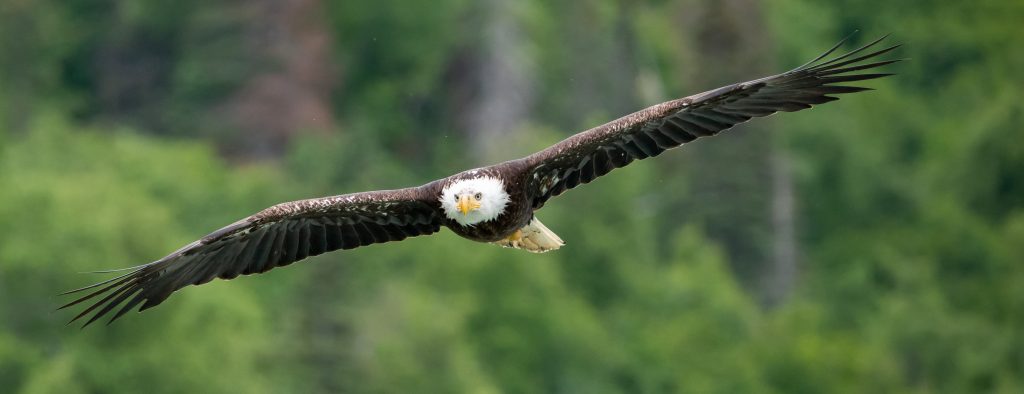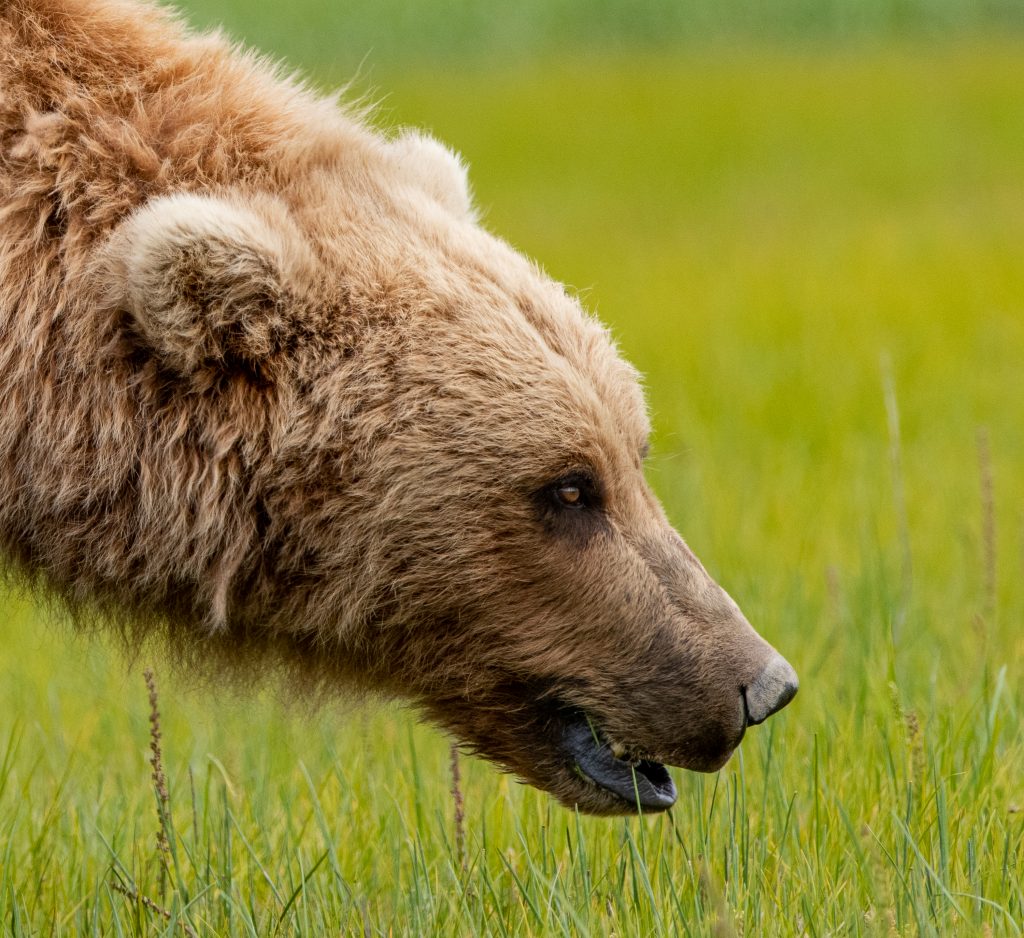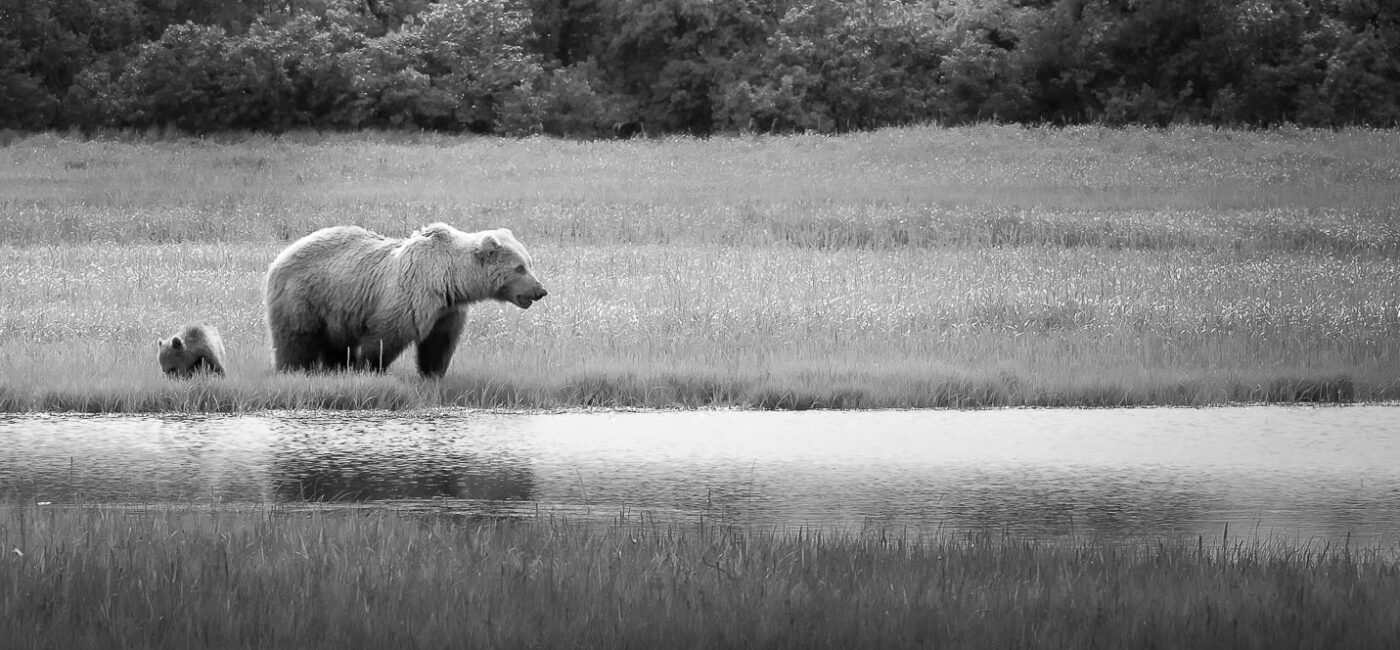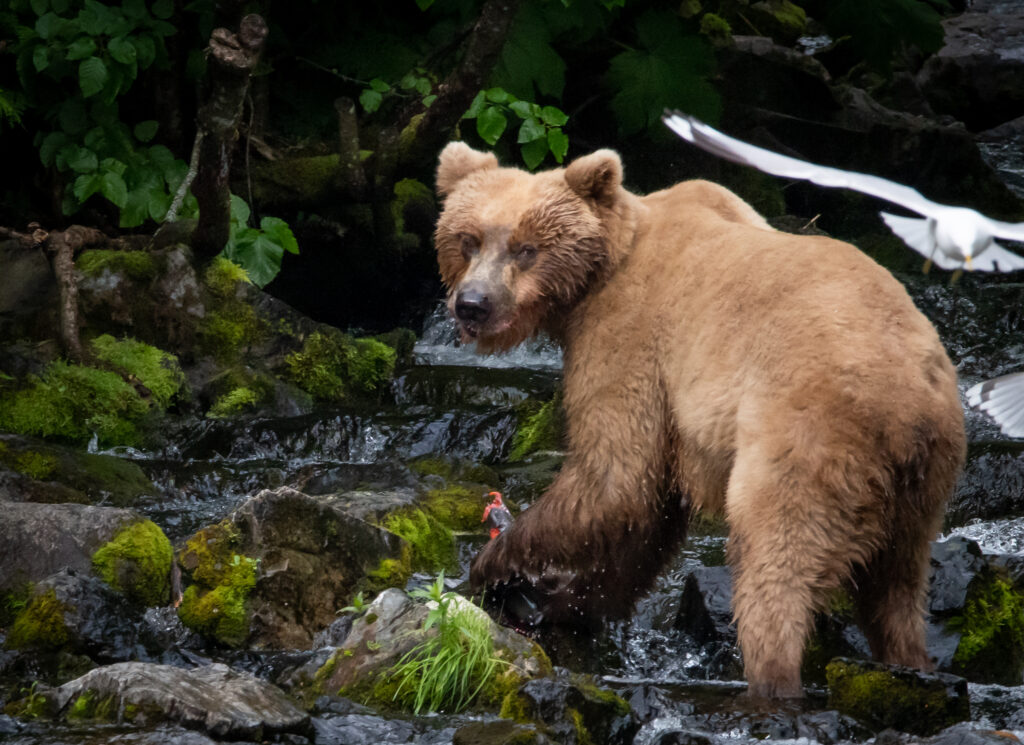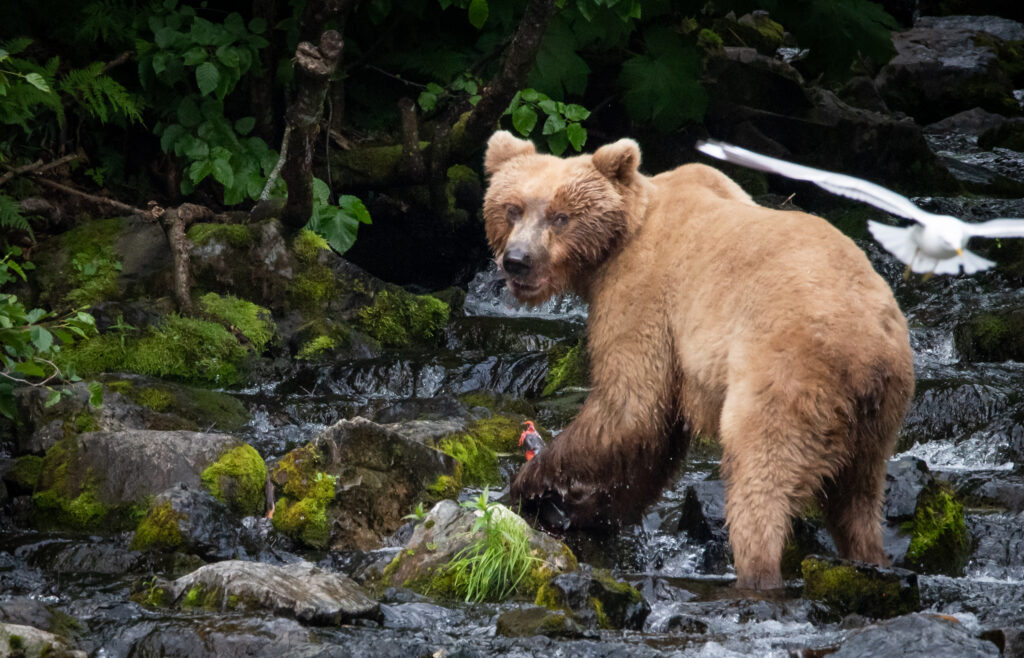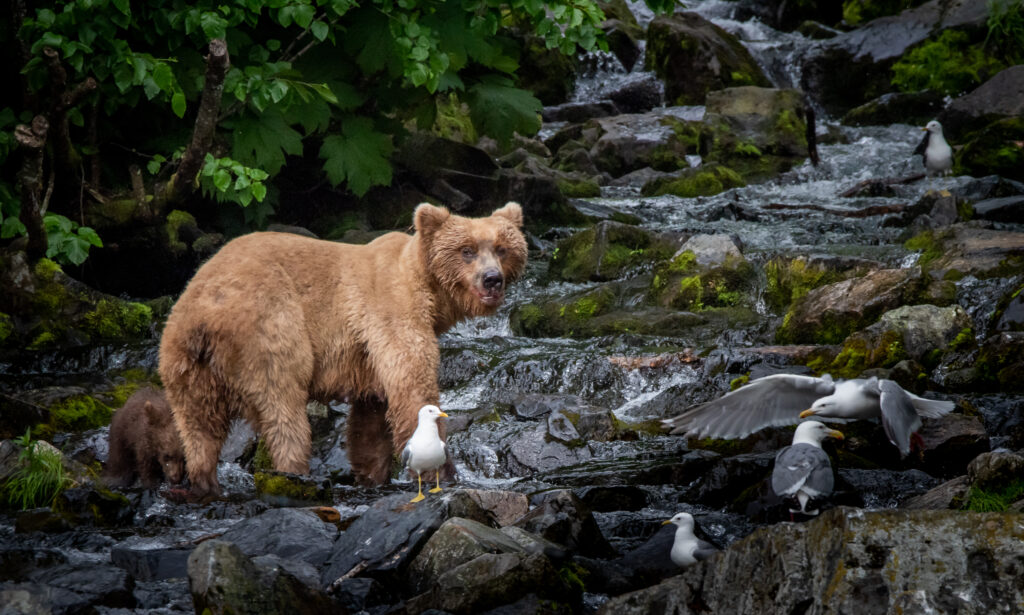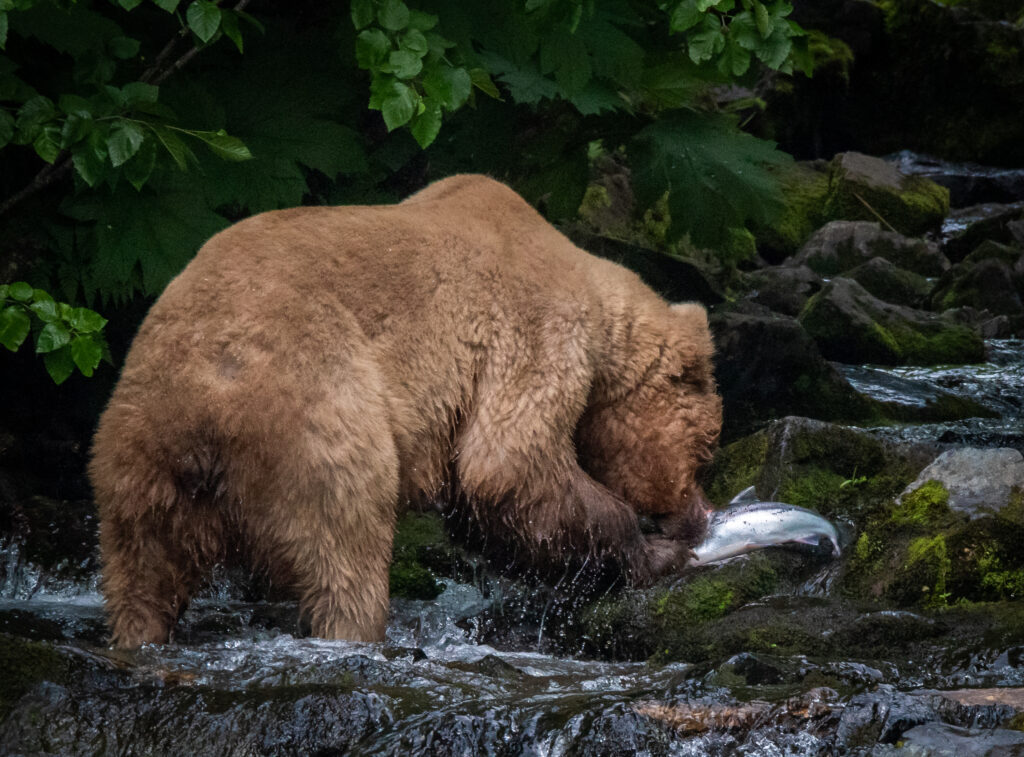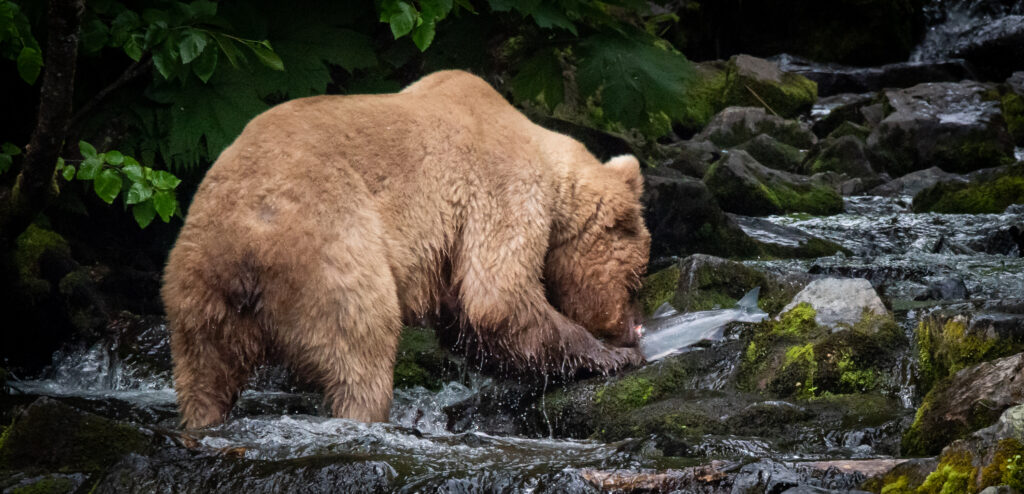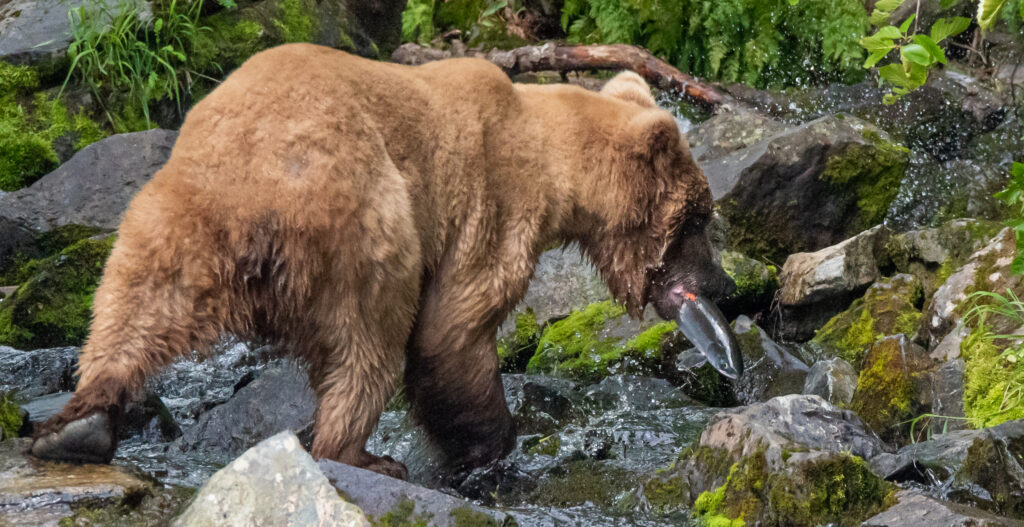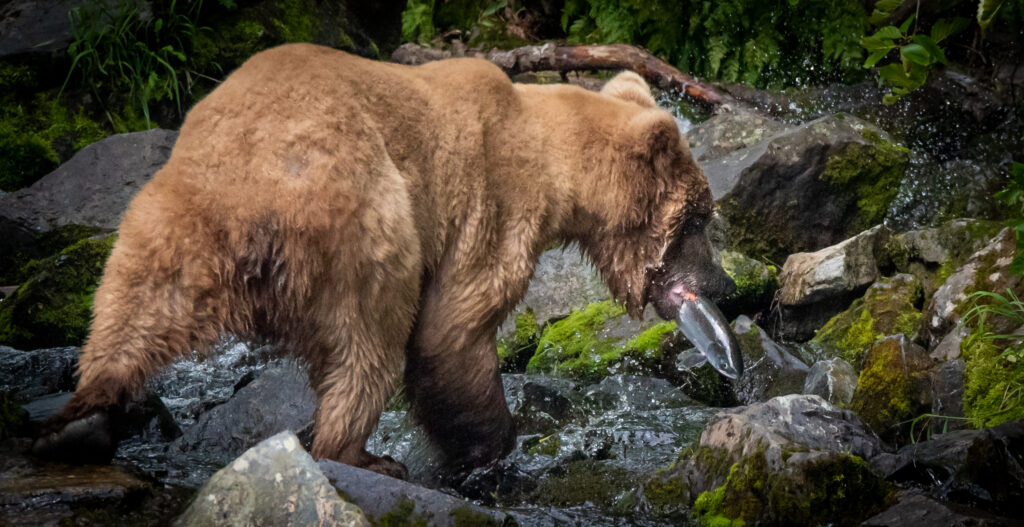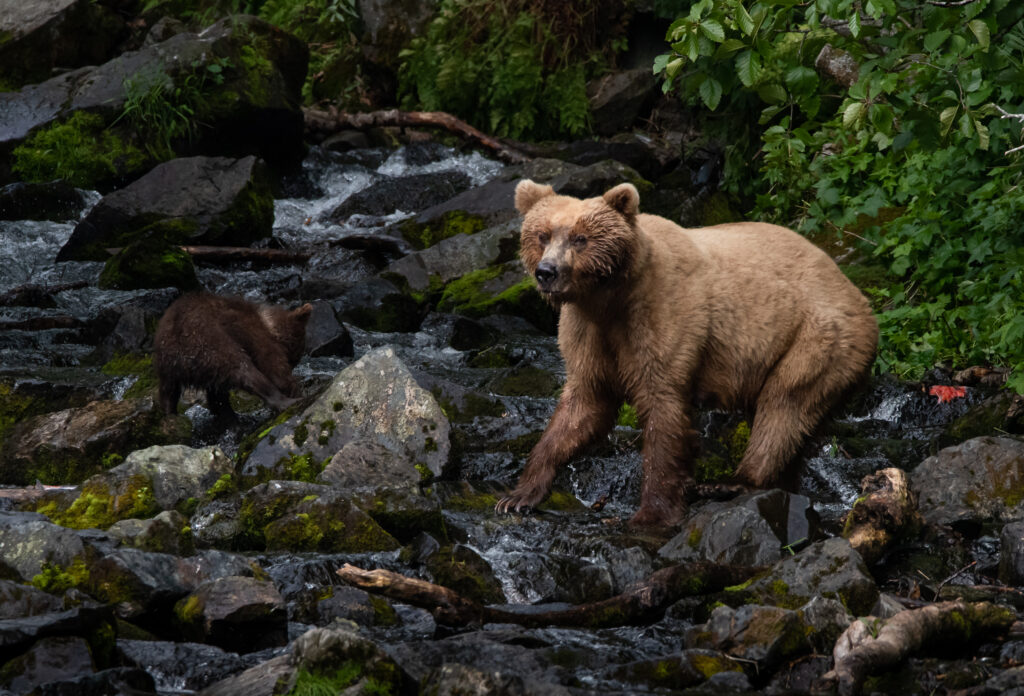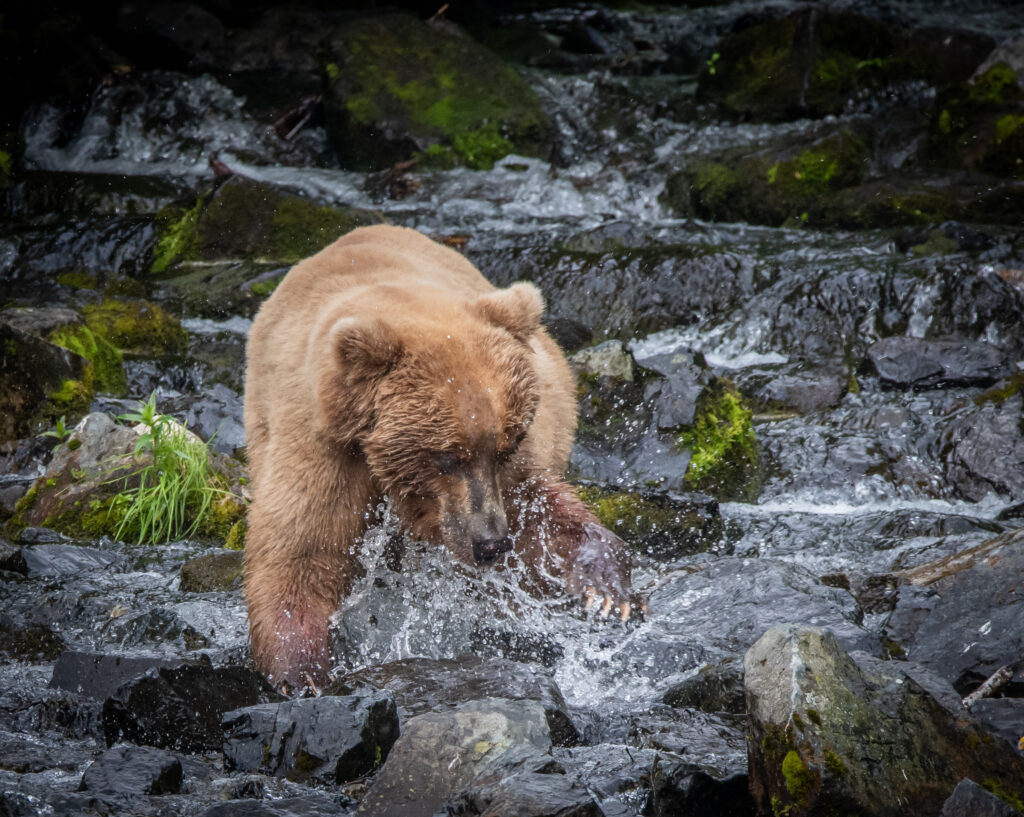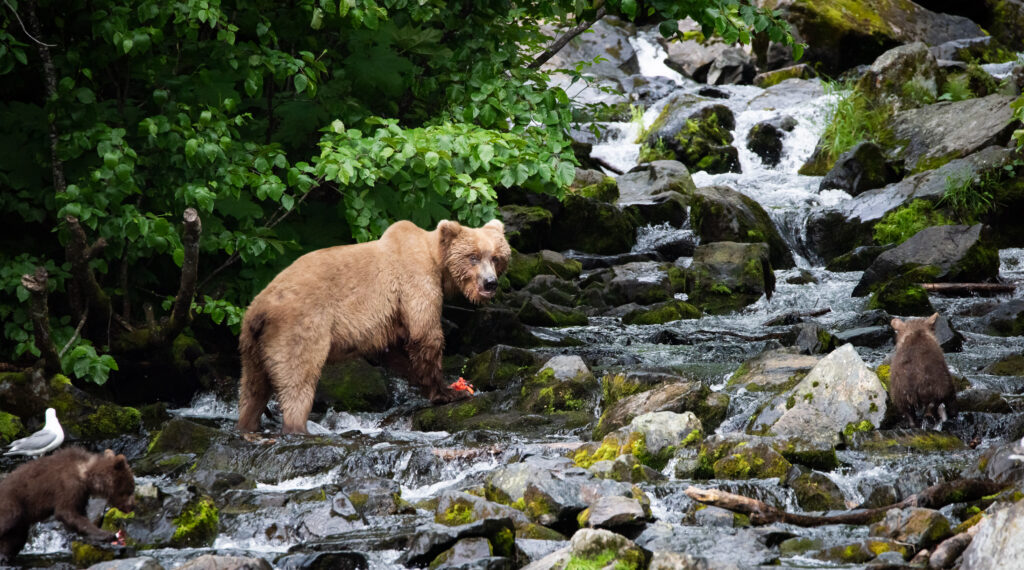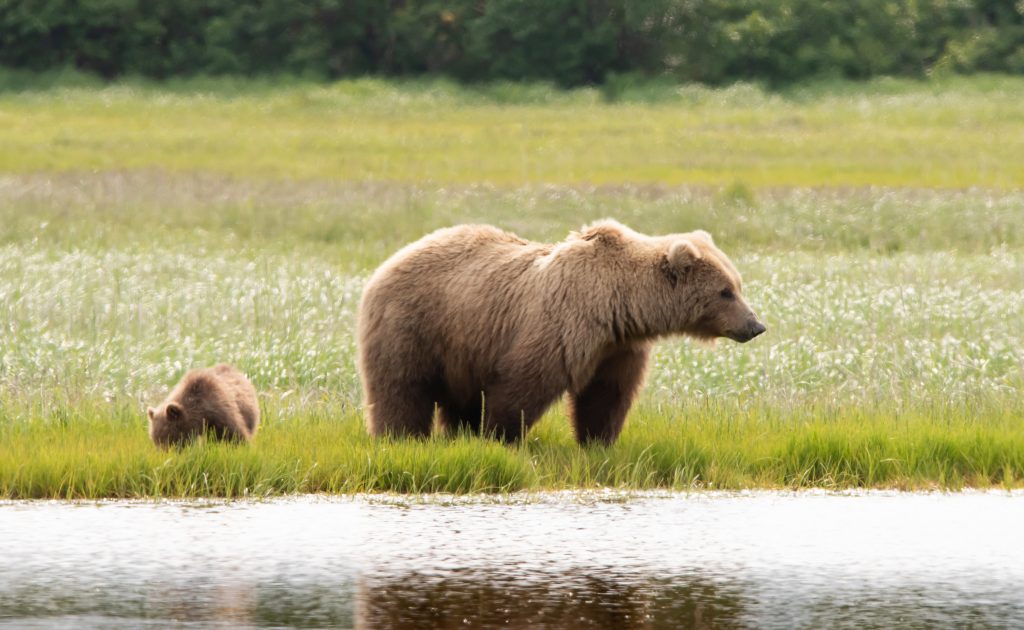
The small Cessna aircraft took off from Homer, Alaska and rose above the fog and rain of Cook Inlet. We were headed west to Katmai National Park and Preserve- a famous location for viewing Brown Bears. The glacier covered mountain range spread out beneath the wings of our noisy little aircraft. Peering out the windows we counted dozens of dormant volcanos pock-marking the blinding white snow and ice.
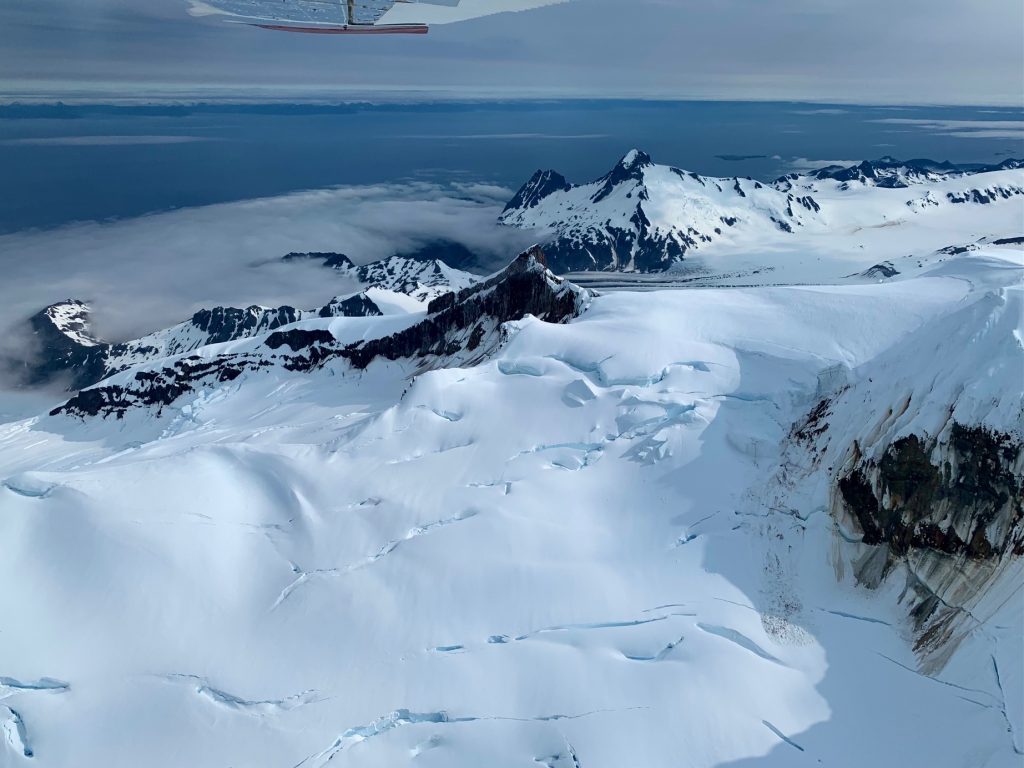
The six seater glided between peaks while we viewed the waterfalls and braided streams that decended to the coastal plain. Ahead was a wide beach of sandbars, tidal pools and weather-bleached logs. The plane bounced to a stop on its balloon tires and our pilot/guide Ben, gave us our bear watching instructions: “Stay together single file and whatever you do, don’t run, if you become afraid”.
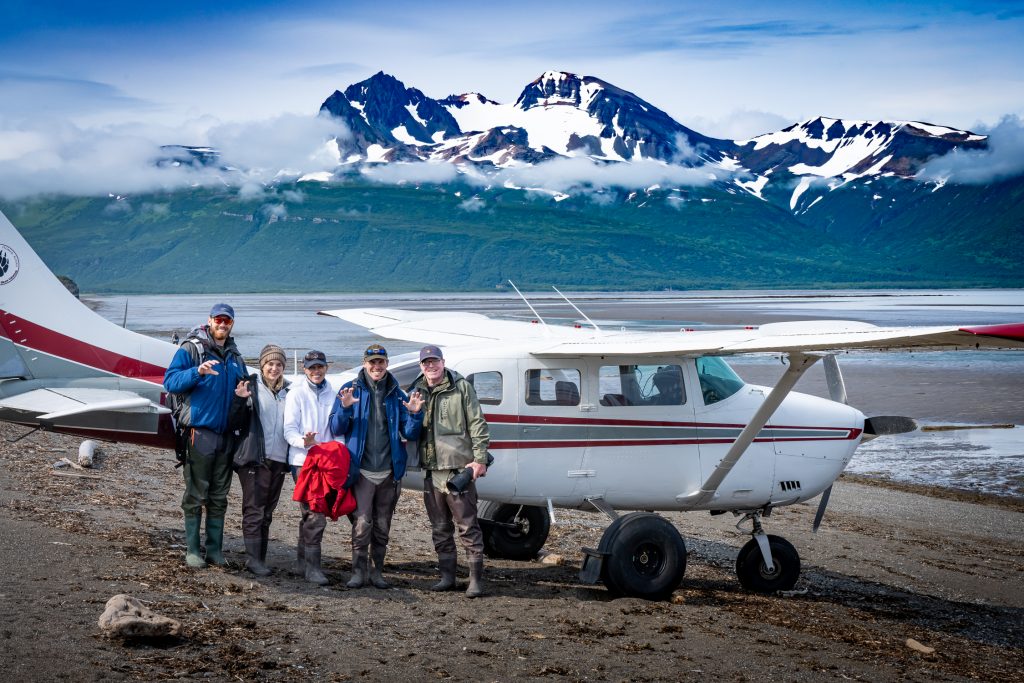
With cameras, backpacks and this note of encouragement, we climbed the dune line leading to an interior meadow. We wore waders to slosh through the muddy meadow of dark green sedge grass— realm of the Alaska coastal brown bears. Not thirty feet ahead a startled female with three cubs rose on her hind legs.
“Back to the beach!” Ben instructed. We were too close and she was agitated.
A half mile further down the shoreline, we broached the dune again. This time we emerged safely positioned from dozens of lone bears—each spaced about an acre apart.
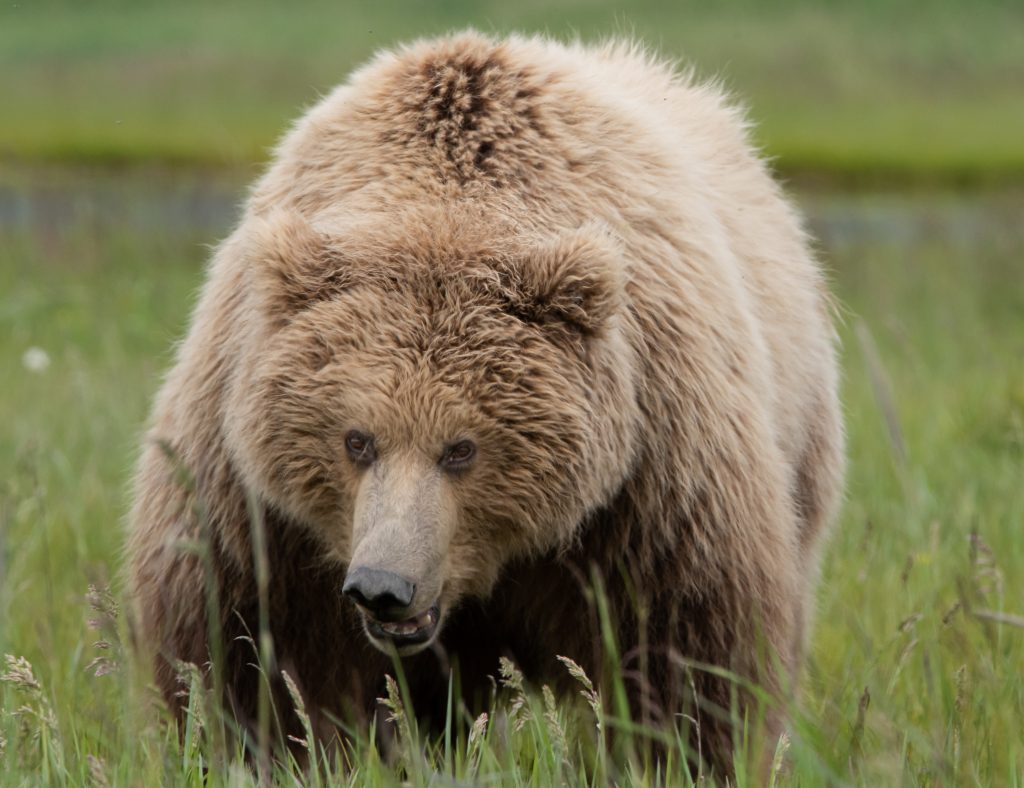
The closest was a short telephoto shot away and I started taking photos. The thousand pounder appeared well-fed, focused on consuming his daily requirement of twenty pounds of sedge. His thick fur was” blonde with highlights” sparkling in the sunlight while his dark dark eyes seemed small for his broad round face. Occasionally he looked up to assess our intent.
“We are going to hike into the meadow about four miles,” reported Ben, “Its safe. No party of three or more has ever been attacked,” he added when we hesitated before jumping into formation behind him.
I experienced a strong rush of adrenaline that kept all senses on high alert—an odd mix of fear and awe that would not subside for the next three hours.
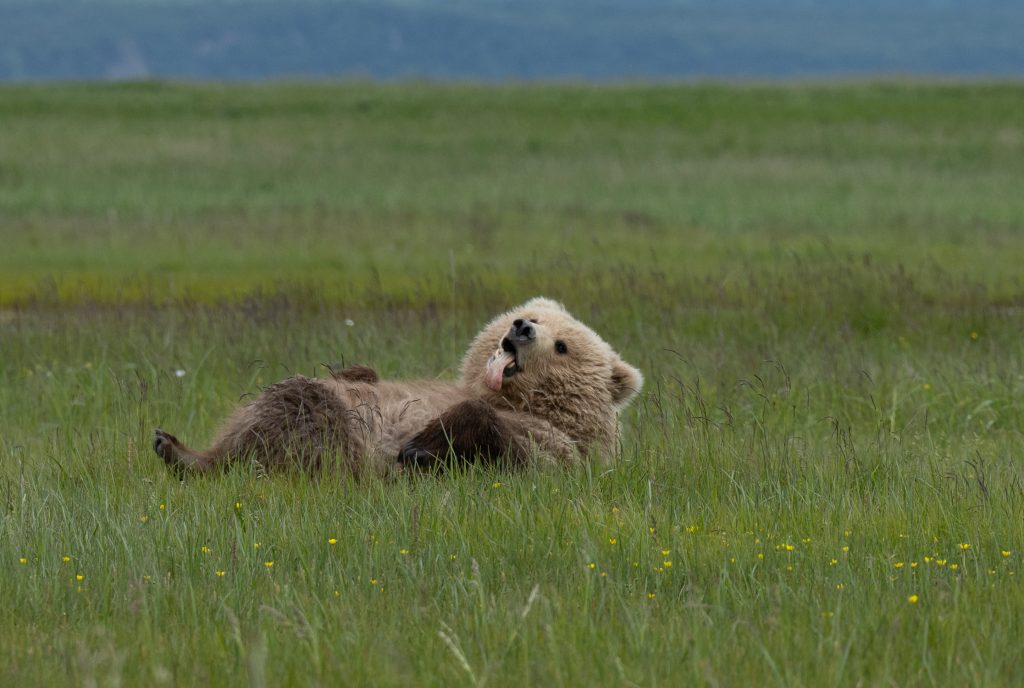
We walked within a hundred yards of thirty bears ranging from year-old cubs to ten foot tall adults. We were getting the photos of a lifetime. Bears laying on their backs. Bears busily chomping grass (It tastes sweet like Aurigula salad—Ben suggested we try some) Mothers leading cubs. And cubs play-fighting with each other.
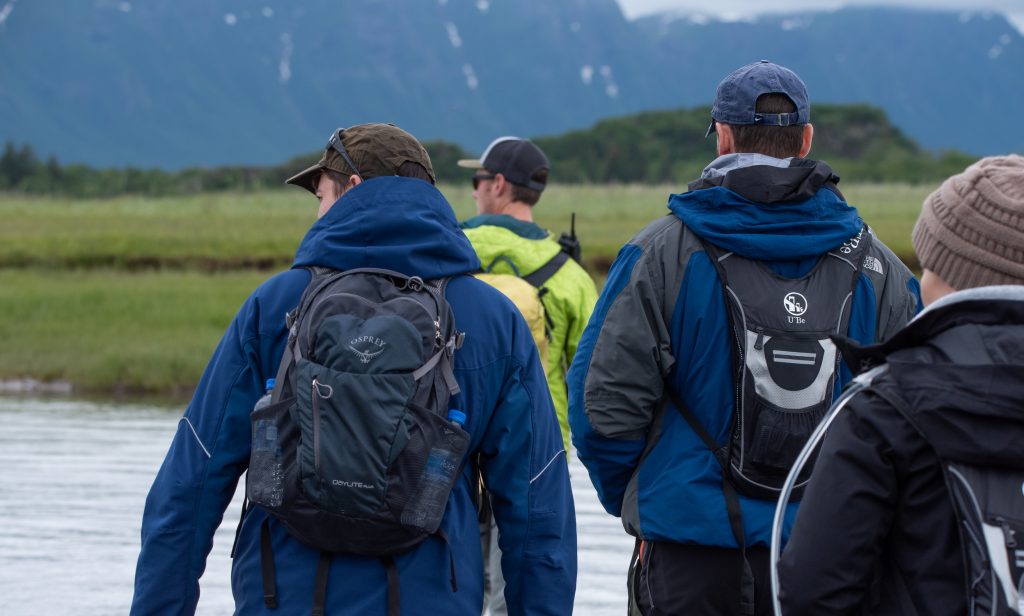
Our minds calmed a bit as Ben described how the bears have become used to the human visitors who respect their space.
In a few weeks, the bears would move to the beaches and rivers to catch Salmon, but this first week of July, they feasted on sedge and were unconcerned with humans.
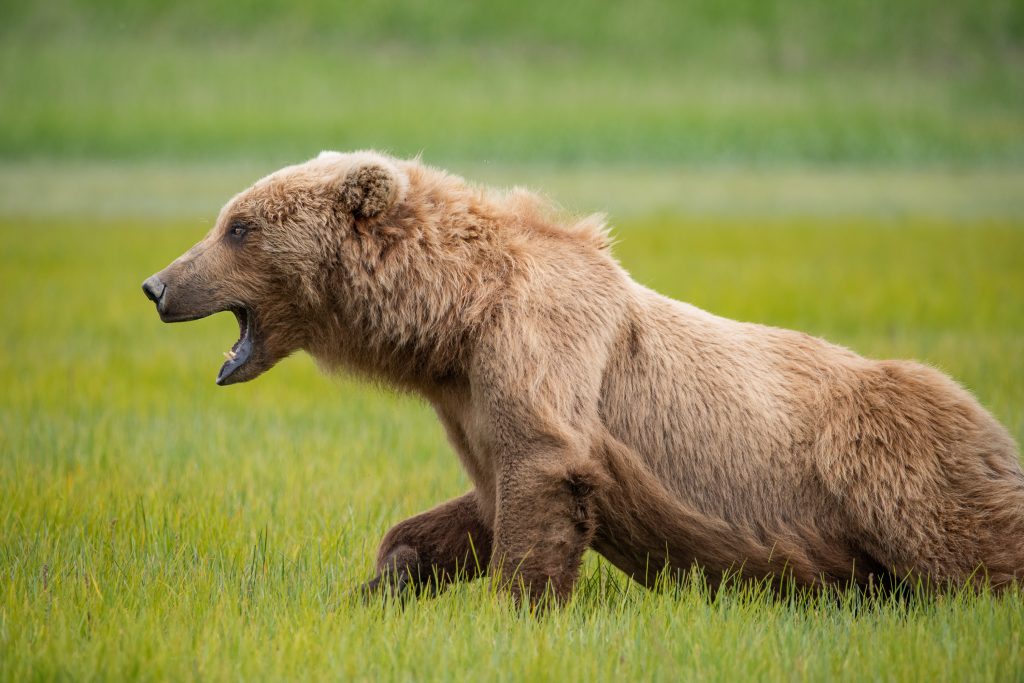
We waded a shallow stream and encountered a large bear that plainly did not want us in his realm. His angry eyes and flashing teeth said he did not approve of us, Air Bear Tours, or any group of intruders into his territory. The giant grizzly stood on its hind legs frightening even Ben. He then began pacing back and forth in front of us, huffing and spitting while zig- zagging closer and closer.
“We need to group tightly together and get on one knee,” Ben commanded,
“ It’s a show of submission.” he then explained. We dropped and froze in place. No one spoke.
I thought of the fact that Ben carried no gun or bear spray, only a flare. I wondered if we had done a complete job of washing the prior day of fishing Salmon scales from our pants and parkas. Happily, Mr. grouchy bear grew tired of us and let us pass.
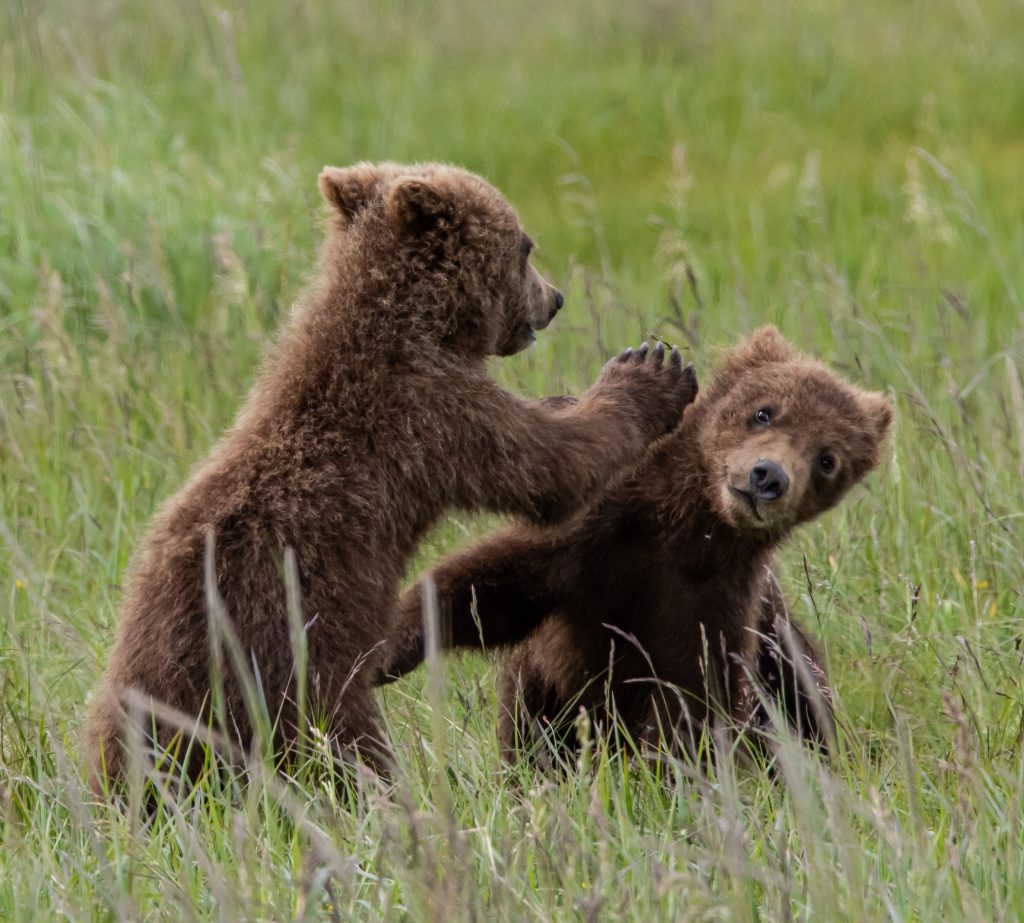
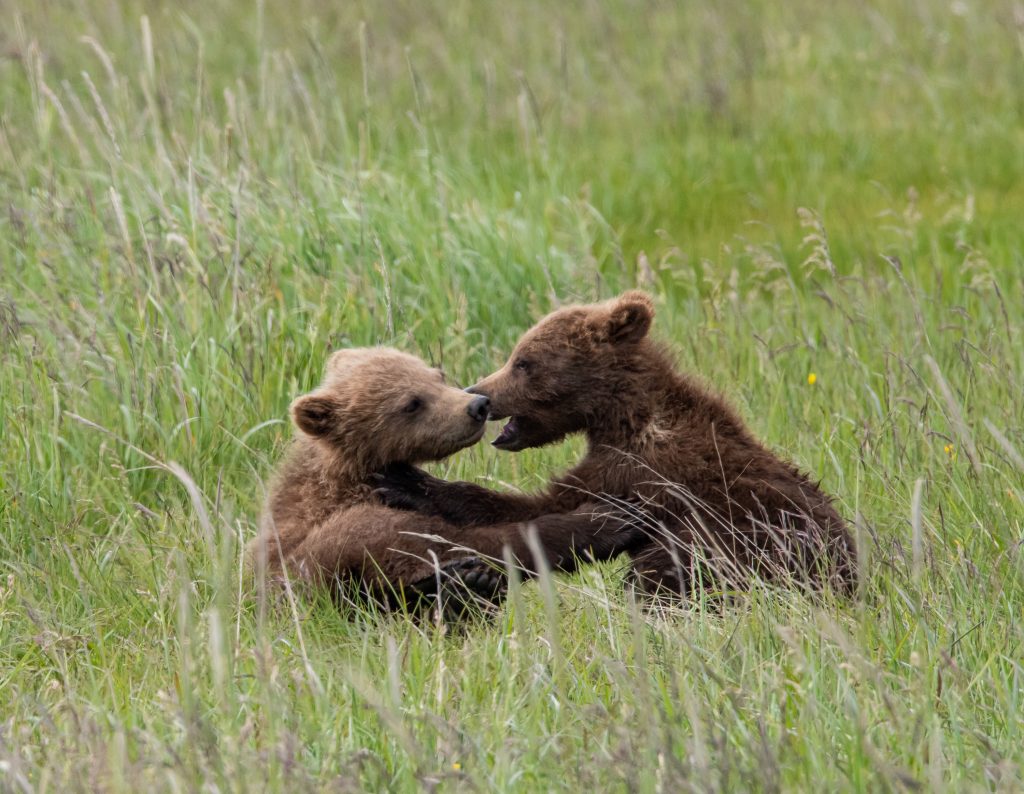
Racing heart beats and razor sharp situational awareness made the time pass quickly. The three hours
seemed like 15 minutes. .Back at home, it would take weeks to review and edit the trove of wildlife images within our memory cards. Each of us agreed. Nothing in our travel experiences had ever equaled the intensity of standing among the giant brown bears of Katmai.
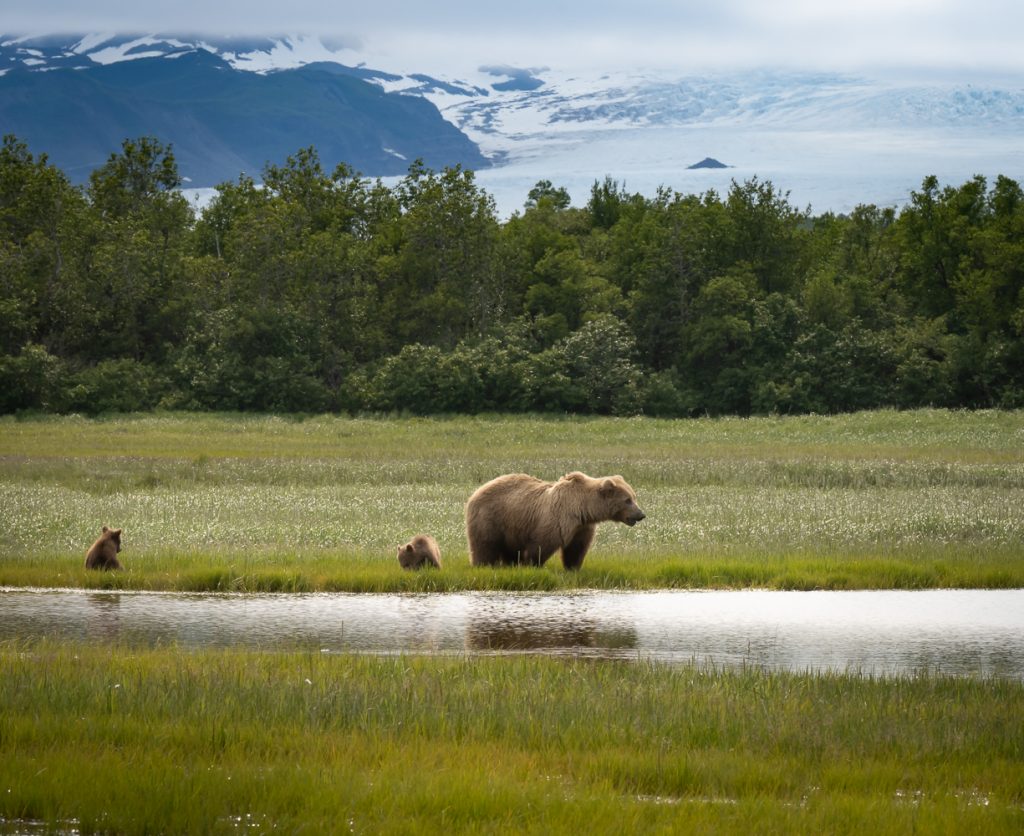
Photo Masters Workshops offers a three-day workshop each summer entitled, “Brown Bears and Golden Eagles”
Day one includes a fly plane trip to Hallo Bay. Day two features a pontoon plane trip that combines salmon fishing near Lake Clark National park. (The salmon we catch attract bears and bald eagles for our photographs—and become the evenings meal) Day three includes a private boat cruise along the Kenai Fyords where whales and birds can be photographed against a backdrop of glacial ice cliffs.
To join an interest list and learn more, email Bob Gibson at rjg@rjgibson.com
